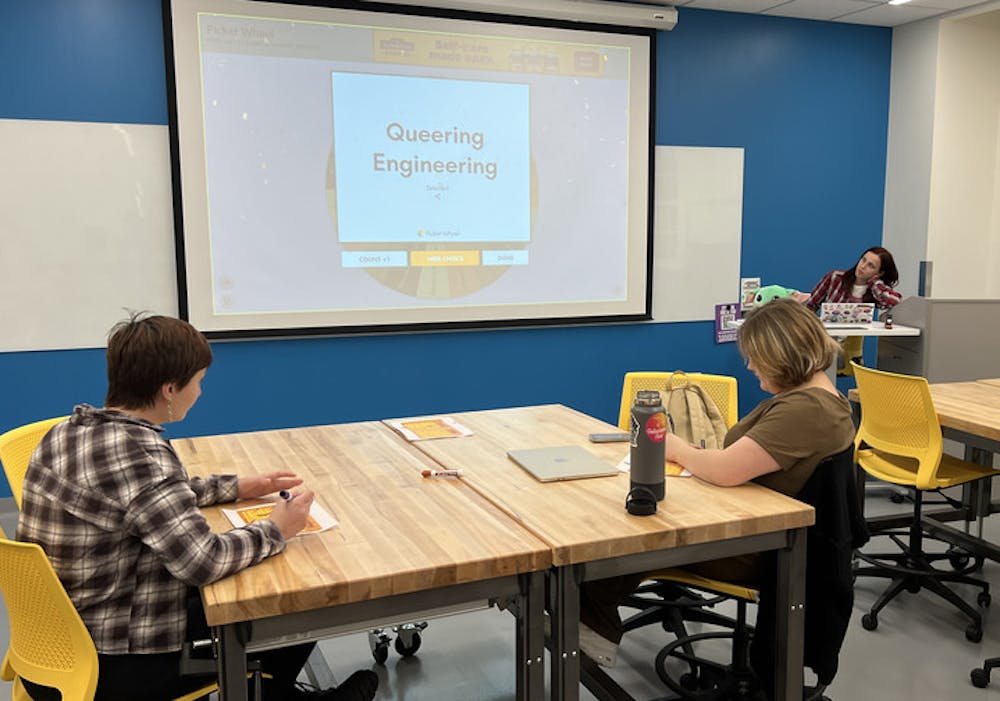With senior Maria Ledin leading as president of oSTEM this year, they aim to change the status of the organization to have more presence on campus. For Ledin, transitioning into the role and rebuilding the community has not been easy, but they said they believe it’s necessary.
For Ledin and for others involved in the chapter, finding LGBTQ+ connections or a sense of LGBTQ+ communities within science fields can prove difficult.
"I would really want the space where I can study and just relax and have other people learn more about being queer person in STEM,” Ledin said.
This mindset is what drives Ledin in the work they perform as president — having been inspired to jumpstart the organization in part because they knew of individuals on campus that could and would benefit from the space that oSTEM provides.
For the past two years, oSTEM was not active on Elon’s campus. After complications with the COVID-19 pandemic and a leadership team that had mostly graduated, the organization disappeared from campus.
The start of the new year is also a new start for Elon’s oSTEM. Inspired by the need for this space across campus for LGBTQ+ individuals involved in STEM, Ledin said they must navigate directing the organization to achieve goals set by the national chapter while also navigating goals that will establish a special identity for Elon’s chapter of the organization.
They said their goal is to “reshape what we want to look like at Elon.” According to Ledin, one of the specific goals for oSTEM is to provide space and visibility for those involved on campus through events including study sessions, relaxing activities or even group bonding such as movie screenings.
Freshman Finn Hughes is one of those members who has felt the impact of oSTEM. For Hughes, oSTEM is more than a LGBTQ+ organization.
"Just being able to have representation for yourself and see that others are not necessarily trying to attack us, but it's mainly just cis-white males who are in STEM,” Hughes said. “It's nice to see those people who bring those perspectives, especially to certain research topics.”
Hughes, and others involved within oSTEM, often join for visibility and community. These are two factors LGBTQ+ individuals often find missing from their affiliations with the STEM community, noted by Hughes and Ledin.
“The importance of it is just having a place that allows you to express yourself, especially because you don't see a lot of that representation in STEM,” Hughes said. “Having that sort of space to be like, ‘Oh, this is not only what I build on, but this is also something that is a part of like me, just this, but I'm also a person in STEM.’”
oSTEM works to bridge the gap between the two, sometimes separate identities, Ledin said.
“oSTEM, I feel, is definitely one of those things that I've heard a lot about being a niche for people identifying both as queer, and interested in STEM, which a lot of times, don't overlap,” Ledin said. “oSTEM is for the people that overlap. This is where we go.”


